Miyajima, a small island in the Seto Inland Sea, is a revered spiritual destination in Japan. The Daisho-In Temple, located on this sacred ground, offers visitors a unique opportunity to enjoy the island’s rich cultural and religious traditions. Through this 3.5-hour tour, participants can engage in traditional practices, gain insights into the temple’s history, and connect with Japan’s profound spirituality. From prayers and meditation to hands-on experiences like garden cleaning and sand ripple drawing, this intimate experience promises to leave a lasting impression on those seeking to deepen their understanding of Japanese spiritual culture.
Key Points
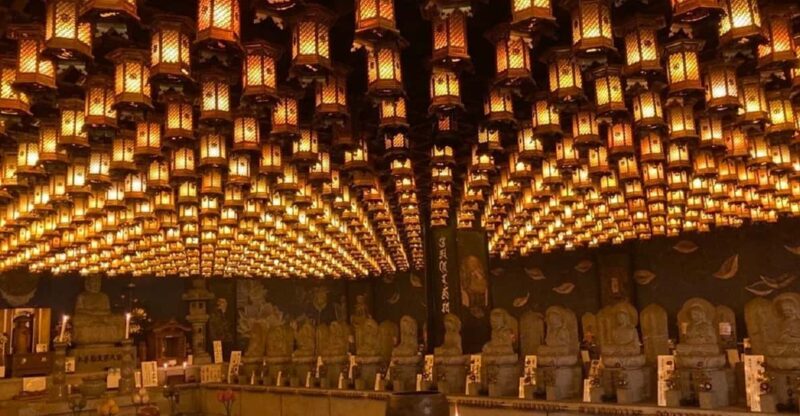
- Explore the rich spiritual and cultural heritage of Miyajima Island through an immersive experience at Daishoin Temple, one of its most significant religious sites.
- Participate in prayers, meditation, and traditional gardening activities to deepen your understanding of Japanese Buddhist practices.
- Gain exclusive access to sacred spaces within the temple, including the revered "Maniden" meditation hall and the Gohyaku Rakan area.
- Learn about the close historical ties between Daishoin Temple and the iconic Itsukushima Shrine, a UNESCO World Heritage Site.
- Appreciate the natural beauty and attention to detail in a Japanese garden while cleaning the gravel and creating sand ripple patterns.
Tour Overview
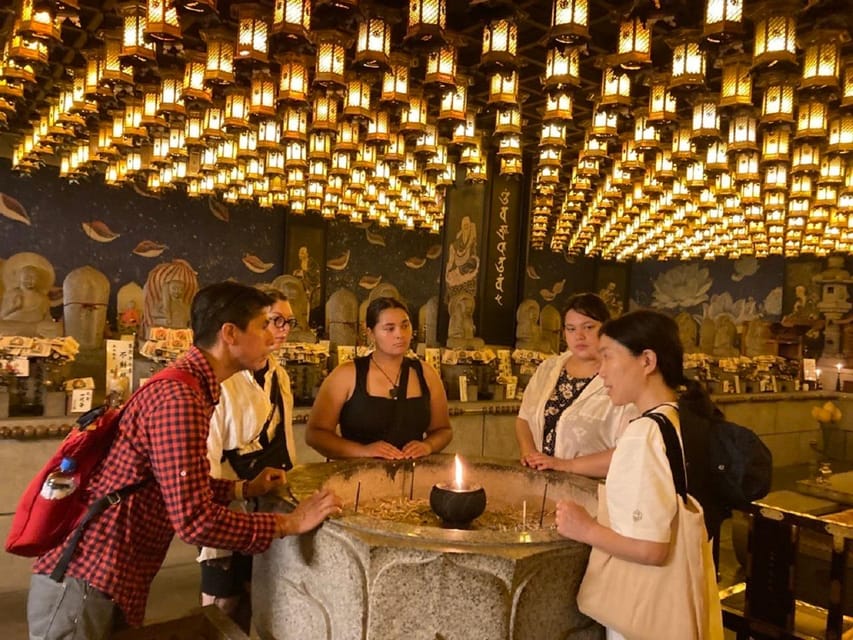
The Miyajima tour offers a 3.5-hour experience with a limited group size of 6 participants. Visitors can choose from multiple language options, including Spanish, English, Japanese, and Portuguese. The tour allows for free cancellation up to 24 hours in advance.
Highlights include receiving prayers and meditating at the "Maniden," cleaning a Japanese garden, and drawing sand ripples. Participants will also learn about the cultural history of Miyajima through the Daishoin Temple, one of the island’s most significant temples, which has been intimately connected with the Itsukushima Shrine for centuries.
The meeting point is Hexagon.cafe, located right after the gate of Daishoin Temple, which is about a 20-minute walk from the Miyajima Pier.
You can also read our reviews of more tours and experiences in Hiroshima.
Highlights of the Experience
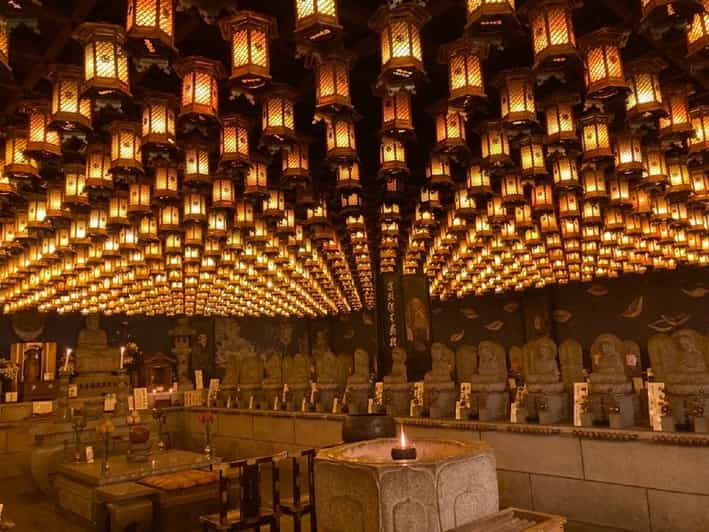
Visitors to the Miyajima tour can expect an immersive spiritual experience, beginning with prayers and meditation at the revered "Maniden" of Daishoin Temple.
Participants will then clean a Japanese garden and draw sand ripples, gaining a deeper appreciation for the temple’s intricate landscaping. The tour also showcases the temple’s rich cultural history, including its intimate connection with the nearby Itsukushima Shrine.
Throughout the experience, guests can explore various sacred spaces, such as the Gohyaku Rakan and Kannondo, gaining insights into the temple’s significance within Miyajima’s religious landscape.
Itinerary Breakdown
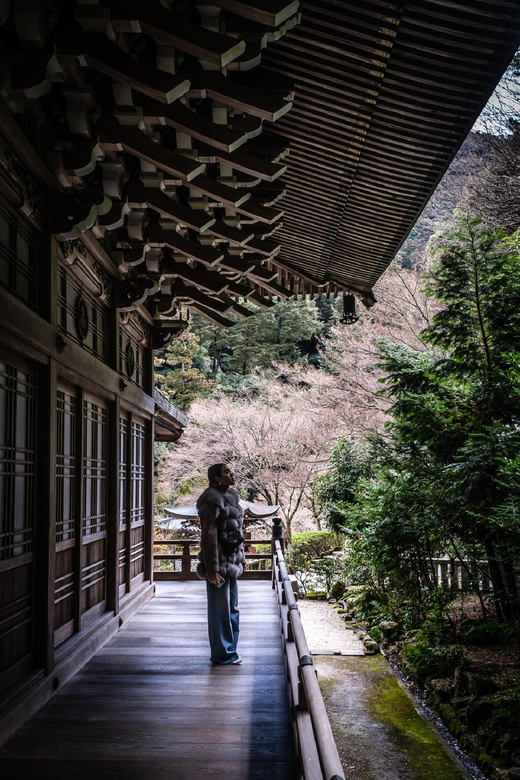
The tour begins at Hexagon.cafe, located just after the gate of Daishoin Temple. Participants will first visit Gohyaku Rakan, a group of 500 stone statues, followed by Kannondo, a prayer hall.
They’ll then explore Kaidan Meguri, a pathway leading to the main halls. Next, they’ll experience prayer and meditation in Maniden. After that, they’ll venture to Henjo Kutsu, a cave-like space.
The highlight is cleaning a Japanese garden and drawing sand ripples, learning about the cultural significance. Finally, the tour ends with an epilogue back at Hexagon.cafe, where participants can reflect on the enriching spiritual experience.
About Daishoin Temple
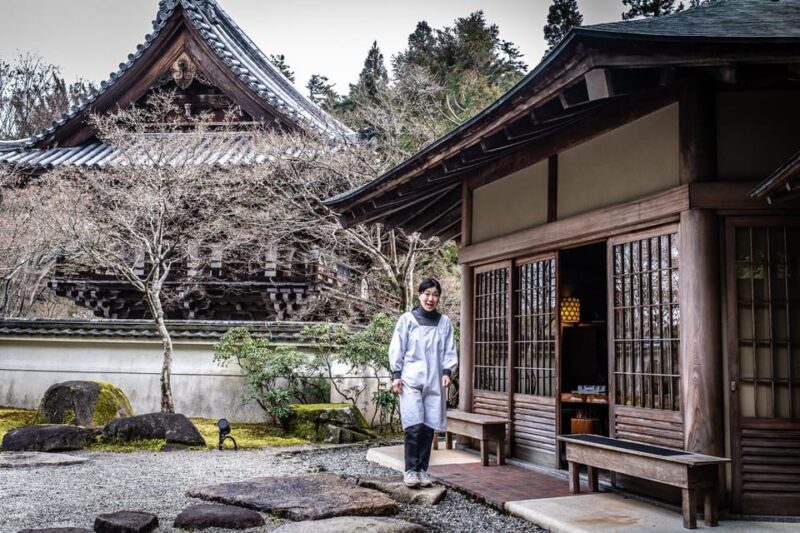
Daishoin Temple is one of Miyajima’s most significant temples, intimately connected with Itsukushima Shrine for centuries. Founded in 806 by the famous religious figure Kukai, it’s a temple of great historical and cultural significance.
Some key facts about Daishoin Temple:
- It’s one of the most important temples on Miyajima, a sacred island renowned for its natural beauty and spiritual sites.
- The temple’s history is closely intertwined with that of Itsukushima Shrine, another iconic landmark on the island.
- Kukai, the founder of the Shingon school of Buddhism, established Daishoin Temple as a place of worship and spiritual practice.
- Visitors can explore the temple’s rich heritage, architecture, and rituals, gaining insights into Japan’s profound spiritual traditions.
Meeting Point and Important Information
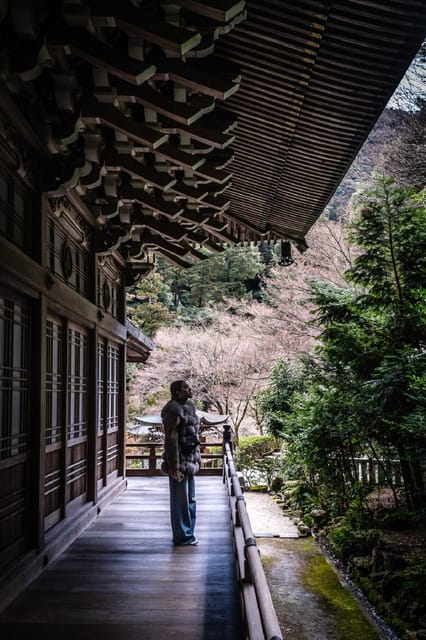
The meeting point for the tour is Hexagon.cafe, located right after the gate of Daishoin Temple. Daishoin Temple is about a 20-minute walk from Miyajima Pier.
Children 12 and older are charged the same as adults, while those 11 and under can attend for free if they’re not participating in the prayer experience.
Participants are advised to wear comfortable clothing for the tour, which includes various activities such as cleaning a Japanese garden and drawing sand ripples.
The tour group size is limited to 6 participants, and it’s available in Spanish, English, Japanese, and Portuguese.
Prayers and Meditation at Maniden
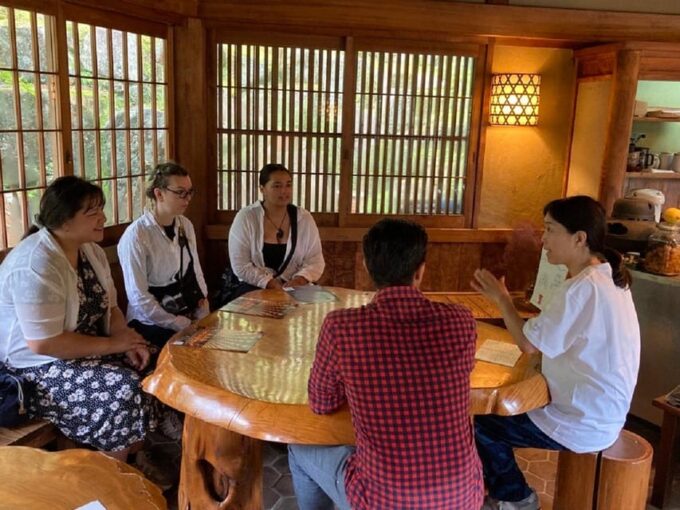
After visiting notable sites around Daishoin Temple, participants can experience the spiritual heart of the tour – prayer and meditation in Maniden. This sacred space offers a unique opportunity to connect with Japanese spiritual traditions.
The experience includes:
- Receiving a personal prayer from a Buddhist monk.
- Meditating in the quiet, contemplative atmosphere of Maniden.
- Exploring the history and significance of this revered meditation hall.
- Gaining a deeper understanding of the spiritual practices that have sustained Daishoin Temple for centuries.
This immersive experience allows guests to pause, reflect, and deepen their connection to the rich cultural heritage of Miyajima.
Japanese Garden Cleaning and Sand Ripple Drawing
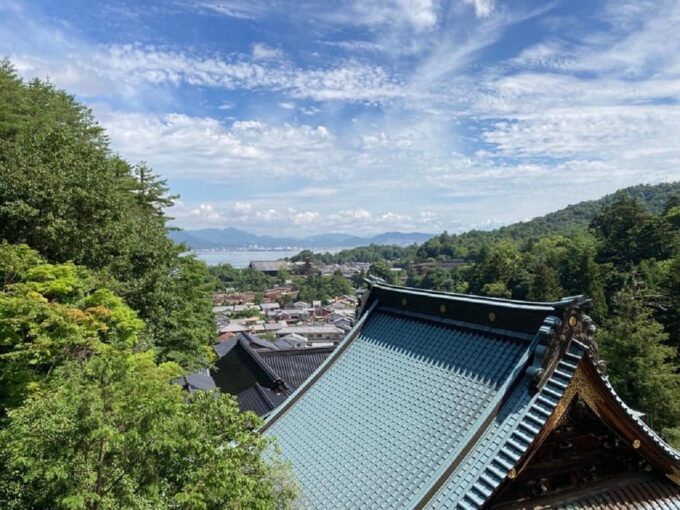
After their time spent in meditation, participants then transition to the next portion of the tour – a hands-on experience in the temple’s Japanese garden. Here, they are invited to assist in the upkeep of the meticulously maintained grounds. Participants carefully clean the gravel, ensuring each stone is placed with purpose, and then use wooden rakes to create intricate patterns in the sand, known as "sabi". This serene activity allows them to connect with the natural world and appreciate the attention to detail that goes into maintaining a Japanese garden.
| Task | Description | Duration |
|---|---|---|
| Garden Cleaning | Participants tidy the gravel, carefully placing each stone | 20 minutes |
| Sand Ripple Drawing | Using wooden rakes, participants create intricate patterns in the sand | 15 minutes |
| Reflection | Participants take a moment to appreciate the serene garden | 10 minutes |
Cultural History of Miyajima
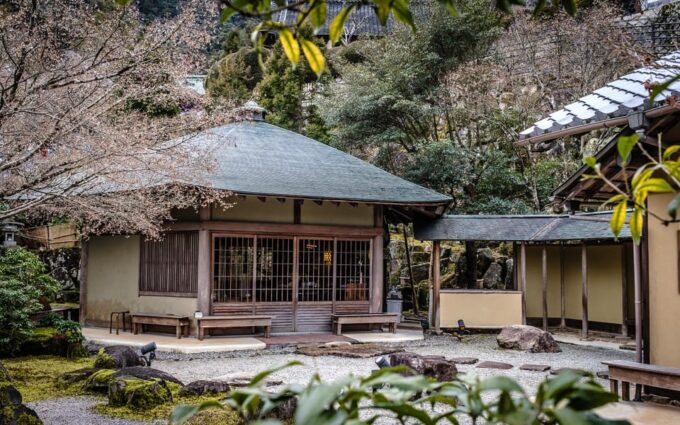
Deeply rooted in the spiritual traditions of Japan, the island of Miyajima boasts a rich cultural heritage spanning centuries. For over 1,200 years, Miyajima has been a sacred site, home to numerous temples and shrines that have played a central role in the island’s history and identity.
Some key aspects of Miyajima’s cultural significance include:
- Itsukushima Shrine, a UNESCO World Heritage Site, with its iconic floating torii gate that has become a symbol of the island.
- Daishoin Temple, one of Miyajima’s most significant temples, founded in 806 by the renowned monk Kukai.
- The island’s strong connection to Shintoism and Buddhism, with numerous sacred sites and rituals.
- The preservation of traditional Japanese crafts, such as the production of oyster shells and the creation of intricate woodcarvings.
Frequently Asked Questions
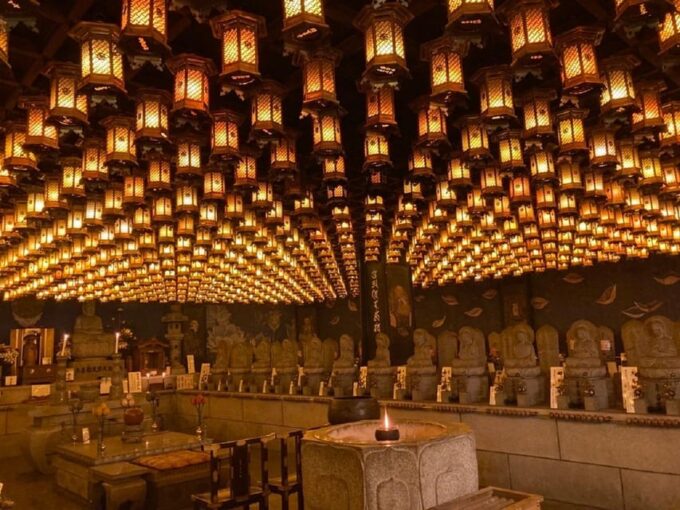
Is Photography Allowed During the Tour?
Photography is generally allowed during the tour, though participants are advised to be respectful and avoid disrupting the spiritual atmosphere. Guests should refrain from using flash photography in certain areas of the temples and gardens.
What Is the Dress Code for the Tour?
The tour has a casual dress code. Participants are encouraged to wear comfortable clothing that allows for easy movement, as the tour involves activities like garden cleaning and sand ripple drawing.
Can I Bring My Own Snacks and Drinks?
Participants can bring their own snacks and drinks on the tour. However, the tour does not include any food or beverages, so visitors should plan accordingly. Participants are responsible for their own refreshments during the 3.5-hour experience.
Is the Tour Wheelchair Accessible?
The tour is not explicitly wheelchair accessible. However, the itinerary includes walking through temples and gardens, which may present some challenges for wheelchair users. It’s best to check with the tour operator for more details on accessibility.
Can I Extend the Tour Duration?
The tour duration can’t be extended, as it’s a fixed 3.5-hour itinerary. However, participants can request additional time at specific sites or adjust the pace within the scheduled timeframe if needed. The tour size is limited to 6 for a personalized experience.
Recap
The Miyajima: Experience Japanese Spiritual Culture at Daisho-In tour offers a unique opportunity to take in the rich spiritual and cultural traditions of this sacred island. Participants engage in various hands-on activities, including prayers, meditation, and garden cleaning, while also gaining insights into the historic significance of the Daisho-In Temple and its connection to the iconic Itsukushima Shrine. This intimate experience allows visitors to connect with Japan’s profound spiritual heritage in the serene setting of Miyajima.
You can check if your dates are available here:More Tour Reviews in Hiroshima
Not for you? Here's more things to do in Hiroshima we have recnetly reviewed
- 2 Best Dining Experiences In Hiroshima
- 2 Best Dinner Tours In Hiroshima
- 6 Best Full-Day Tours In Hiroshima
- 4 Best Lunch Experiences In Hiroshima
- 11 Best Food Tours In Hiroshima
- Hiroshima and Miyajima by Bike and Boat
- 5-Day ONE WAY Bus to North Hyogo From Fukuoka to Hiroshima
- Japan: 7-Day Tour of Tokyo, Osaka, Hiroshima & Okinawa
- 3-Day ONE WAY Bus Tour to Hiroshima via SANIN From Fukuoka
- Hiroshima Highlights Private Day Tour
- Hiroshima and Miyajima Day Trip From Kyoto/Osaka
- From Osaka/Kyoto: Hiroshima & Miyajima Private Guided Tour
